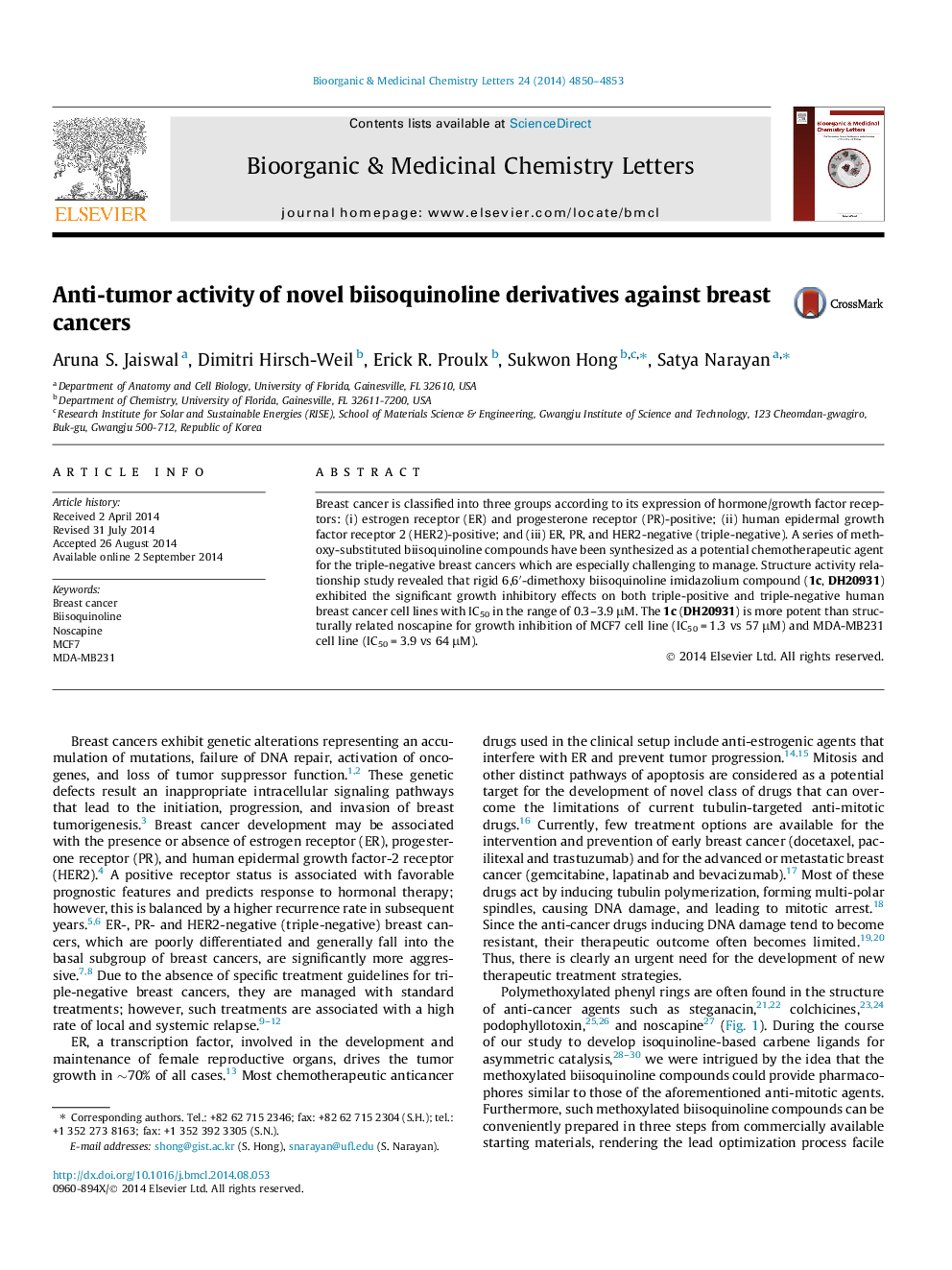| Article ID | Journal | Published Year | Pages | File Type |
|---|---|---|---|---|
| 1371545 | Bioorganic & Medicinal Chemistry Letters | 2014 | 4 Pages |
Breast cancer is classified into three groups according to its expression of hormone/growth factor receptors: (i) estrogen receptor (ER) and progesterone receptor (PR)-positive; (ii) human epidermal growth factor receptor 2 (HER2)-positive; and (iii) ER, PR, and HER2-negative (triple-negative). A series of methoxy-substituted biisoquinoline compounds have been synthesized as a potential chemotherapeutic agent for the triple-negative breast cancers which are especially challenging to manage. Structure activity relationship study revealed that rigid 6,6′-dimethoxy biisoquinoline imidazolium compound (1c, DH20931) exhibited the significant growth inhibitory effects on both triple-positive and triple-negative human breast cancer cell lines with IC50 in the range of 0.3–3.9 μM. The 1c (DH20931) is more potent than structurally related noscapine for growth inhibition of MCF7 cell line (IC50 = 1.3 vs 57 μM) and MDA-MB231 cell line (IC50 = 3.9 vs 64 μM).
Graphical abstractFigure optionsDownload full-size imageDownload as PowerPoint slide
